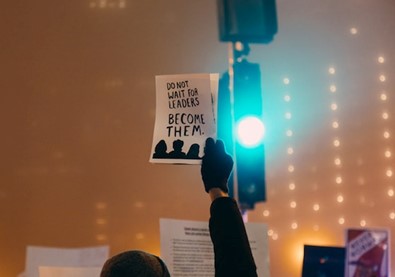Phillip Lorne Lovin is highly skilled in logistics and motivational leadership. Previously, Phil Lovin served as a missionary in Kenya, among other places. In the following article, Phillip L. Lovin discusses motivational leadership in the workplace, post-pandemic, why it’s an integral part of business success today, and how to incorporate motivational leadership into practice.
As companies continue to integrate short-term solutions to the COVID-19 pandemic into their wider, pre-existing business models, it’s becoming increasingly clear that motivational leadership skills must play a greater role in day-to-day operations. Phillip Lorne Lovin explains that today’s leaders must embody clear and empathetic communication skills, resilience and adaptability, and inspirational encouragement to drive employees toward their own self-improvement.
Even as the world returns to normal, these skills will help companies grow and retain talent despite ongoing aftershocks following two years of economic uncertainty and challenges. Phil Lovin takes a look at some of these skills and discusses why motivational leadership will matter more today in a post-COVID world than it did at any time before.
Employees Need Strong Leaders After Two Years of Crisis
The COVID-19 pandemic has been an immense source of stress and anxiety for employees all over the world. For some, the pandemic has meant job loss or the fear of job loss. For others, it’s meant having to work from home in less-than-ideal circumstances. And for many, it’s meant dealing with the added stress of childcare and homeschooling explains Phillip L. Lovin.
In short, the past two years have been tough on everyone, and employees are going to need strong leaders to help them get through the next few months and years. Leaders who can provide clear and concise direction, who can help employees see the light at the end of the tunnel, and who can inspire employees to be their best selves will be in high demand says Phil Lovin.
Yet, the need for motivational leadership is nothing new. In fact, it’s something that companies have been struggling with for decades. A study from Korn Ferry found that roughly 1 in 3 of employees feel “bored” at work. And a study from Gallup found that only 36% of employees are “engaged” in their work.
Phillip Lorne Lovin says that these numbers have remained relatively static for years, which means that the COVID-19 pandemic has not created a new need for motivational leadership. Rather, it has accentuated an existing need. The pandemic has created a unique set of challenges that require unique solutions, and that’s where motivational leadership comes in.

What It Means to Be a Motivational Leader
Motivational leadership is the art of inspiring and encouraging employees to achieve their best. It’s about setting a vision for the future and helping employees see how their individual efforts can contribute to the success of the company. It’s also about helping employees overcome challenges and setbacks explains Phillip Lorne Lovin.
Motivational leaders are able to help employees see the silver lining in every cloud, and they’re able to help employees stay focused on their goals even when times are tough. In short, motivational leadership is about helping employees see the value in their work, and it’s about helping employees see how their work contributes to the success of the company says Phil Lovin.
Why Motivational Leadership Matters
There are a number of reasons why motivational leadership matters, but the most important reason is that it helps employees feel valued. When employees feel valued, they’re more likely to be engaged in their work, and when they’re more engaged in their work, they’re more productive. It’s also worth noting that motivated employees are more likely to stay with a company for the long haul says Phillip L. Lovin.
A meta-analysis from Gallup found that engaged employees contribute to companies that are 21% more profitable and are less likely to leave a company than disengaged employees. Finally, motivated employees are more likely to go above and beyond the call of duty. They’re more likely to take on extra assignments, and they’re more likely to be open to new ideas. In short, motivational leadership is good for business.
How to Be a Motivational Leader
To become motivational leaders, Phillip Lorne Lovin says that employers and managers must first set a clear vision for the future. Employees must know where the company is headed, and they should understand how their individual efforts will help to guide the company in that direction. This requires clear and concise communication on behalf of the management.
Additionally, leaders must be resilient. If nothing else, COVID has shown that times are tough, and they will only get tougher before things improve. To help employees weather the storm, managers must create a motivating environment, no matter how challenging things seem. Phil Lovin says that this requires adaptability and empathy but, when employers are willing to roll with the punches, their teams will inevitably believe in the company’s vision.
The Bottom Line
After two years of ever-shifting challenges, employees need someone to believe in and they need someone to help them see the value in their work. By mastering the skills of a motivational leader, managers and employers can set their businesses on track toward success.







